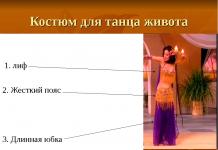Чтобы узнать свои результаты:
2. Ищите себя в списках, используя сортировку по фамилии или учебному заведению. Вы также можете воспользоваться функцией поиска по таблице.
Внимание!
Желтым цветом в таблице выделены ПОЛУФИНАЛИСТЫ.
При отборе полуфиналистов оргкомитет Олимпиады руководствовался следующими условиями:
- Максимальным баллом является 100, поэтому все участники, набравшие 100 баллов, автоматически проходят в полуфинал.
- В полуфинале не может быть менее 10 человек, поэтому если в возрастной группе нет участников, набравших 100 баллов, за максимальное количество баллов принимается следующий по величине балл, и таким образом в полуфинал добираются участники, набравшие этот балл, до тех пор, пока количество участников не достигнет 10.
- Участники, набравшие максимальное и равное количество баллов, имеют равные возможности выхода в полуфинал.
Красным цветом в таблице выделены:
- повторные попытки пройти задания Олимпиады
- работы участников, которые принадлежат к другой возрастной категории
- работы участников, которые имеют или в данный момент получают высшее лингвистическое образование.
Дорогие полуфиналисты!
Если Вы нашли свою фамилию в списках, выделенную желтым цветом, значит, от участия в финале Всероссийской Олимпиады Вас отделяет всего один шаг! Когда у Вас пройдет порыв радости, пожалуйста, не забудьте проверить Ваш почтовый ящик, указанный при регистрации на Первом этапе Олимпиады. Именно на этот адрес электронной почты будет выслана ссылка на задание полуфинала. Срок выполнения задания полуфинала – до 23:59 по московскому времени 29 ноября 2015 г.
Спасибо всем, кто принял участие в Первом этапе Всероссийской Интернет-Олимпиады по английскому языку 2015! Если Вы не вошли в списки финалистов, не расстраивайтесь. У Вас еще будет возможность взять реванш, приняв участие в следующей Олимпиаде, которая состоится в 2016 году! Ждем Вас снова в следующем году и желаем успехов в изучении английского языка!
Итак, все мы этого долго ждали и... вот они списки финалистов Второй Всероссийской Интернет-Олимпиады по английскому языку!!!
"2-4 классы" :
Шенникова Анжелика – 20 баллов – Пенза
Канякова Виктория – 20 баллов – Пермь
Папушина Дарья – 20 баллов – Вологда
Ткаченко Анастасия – 20 баллов – Москва
Азарьева Арина – 19 баллов – пос. Саракташ Оренбургская обл.
Смирнов Вадим – 19 баллов – Ярославль
Хаменский Александр – 19 баллов – Красноярск
"5-7 классы" :
Черкунова Дарья – 20 баллов – Самара
Баймагамбетова Ангелина – 20 баллов – Самара
Паршина Ольга – 20 баллов – Данков
Вязов Иван – 19,5 баллов – Чебоксары
Комарова София – 19 баллов – Москва
Александрова Анна – 18 баллов – Челябинск
Жуков Герман – 18 баллов – Железнодорожный
Завьялов Александр – 18 баллов – Челябинск
Сухоруков Артем – 17 баллов – Челябинск
Петров Илья – 17 баллов – Чебоксары
"8-9 классы" :
Андреевских Анна – 20 баллов – Екатеринбург
Кубенко Ксения – 20 баллов – Москва
Ланина Алиса – 20 баллов – Москва
Риц Мария – 20 баллов – Гатчина
Иванова Елизавета – 19 баллов – Самара
Хаботина Александра – 19 баллов – Москва
Шустов Всеволод – 19 баллов – Москва
Осипенко Екатерина – 18,5 баллов – Челябинск
Кремер Катерина – 18,5 баллов – Москва
Юргель Герман – 18,5 баллов – Санкт-Петербург
"10-11 классы" :
Тараскина Марина – 19 баллов – Челябинск
Клещенко Анастасия – 19 баллов – Обнинск
Мацнева Екатерина – 19 баллов – Липецк
Темурян Кристина – 18,5 баллов – Москва
Бессолицын Тимур – 18,5 баллов – Екатеринбург
Романова Валерия – 18 баллов – Челябинск
Хаботина Мария – 17 баллов – Москва
Жданова Карина – 15 баллов – Уфа
Будина Дарья – 13 баллов – Глазов
Упатова Мария – 12 баллов – Красноярск
"Студенты" :
Большаков Кирилл – 20 баллов – Москва
Бикбулатов Роберт – 19,5 баллов – Люберцы
Меньшенин Николай – 19,5 баллов – Москва
Мошкина Дарья – 19 баллов – Нижний Новгород
Федюшина Анна – 19 баллов – Москва
Проскин Роман – 18 баллов – Долгопрудный
Васильев Антон – 16 баллов – Томск
Белоус Елена – 15 баллов – Москва
Жемелев Георгий – 14 баллов – Санкт-Петербург
«Взрослые» :
Чикуров Александр – 20 баллов – Уфа
Дьяконова Нина – 20 баллов – Москва
Корабельщикова Анна – 20 баллов – Уфа
Карташов Никита – 20 баллов – Санкт-Петербург
Хейфец Илья – 20 баллов – Калуга
Литовченко Елена – 18 баллов – Москва
Мельникова Анастасия – 18 баллов – Алапаевск
Гладин Дмитрий – 15 баллов – Вологда
Мингазова Элиза – 14 баллов – Уфа
Мы поздравляем всех финалистов и желаем им удачи в последнем испытании!! Тех, кто не прошел в финал, призываем не расстраиваться, ведь в следующем году мы Вас снова ждем в качестве участников Всероссийской Интернет-Олимпиады.
2. Выберите свою возрастную категорию (вкладки внизу файла).
3. Ищите себя в списках, используя сортировку по фамилии или учебному заведению. Вы также можете воспользоваться функцией поиска по таблице.
Все этапы Олимпиады пройдены, и перед Вами список победителей Второй Всероссийской Интернет-Олимпиады по английскому языку!
2-4 классы
5-7 классы
8-9 классы
10-11 классы
Студенты
Взрослые
Поздравляем всех победителей и призываем не расстраиваться всех остальных, ведь в 2016 году Интернет-Олимпиада будет снова ждать Вас! Мы постараемся сделать ее еще более интересной!
Task 1
For items 1–10
listen to a passage from a lecture and decide whether the statements (1–10)
are TRUE (A)
, or FALSE (B)
according to the text you hear. You will hear the text twice
.
Аудиозапись
- Some time ago the speaker went to buy a new bicycle.
- A) True
- B) False
- The speaker left the shop without buying anything.
- A) True
- B) False
- The speaker promised the shopkeeper to come back later.
- A) True
- B) False
- The speaker didn’t want to offend the shopkeeper.
- A) True
- B) False
- The speaker thinks that his behaviour in the shop was tactful.
- A) True
- B) False
- The speaker disagrees with the Collins Dictionary definition of tact.
- A) True
- B) False
- The speaker wants to find words that would make people feel better.
- A) True
- B) False
- The speaker doesn’t refer to the situations when one needs to compliment somebody.
- A) True
- B) False
- The speaker calls the behaviour when one is trying to help people avoid feeling bad negative behaviour.
- A) True
- B) False
- The speaker thinks that only positive behaviour is important.
- A) True
- B) False
Task 2
For items 11–15 A, B or C ) to answer questions 11–15 . You will hear the text only once .
- How does Patrick describe the Isle of Collett?
- A) As a place with bad weather conditions.
- B) As a very distant place.
- C) As a stony island.
- What helped Patrick pass the time?
- A) Work on his university thesis.
- B) Weather research.
- C) Birdwatching.
- When Patrick says ‘It took me less than 20 minutes’ he means that…
- A) he couldn’t leave his work for longer.
- B) the island is very small.
- C) he doesn’t like long walks.
- What does Patrick say about his PhD thesis?
- A) He still has a year to work on it.
- B) It was rejected by the university.
- C) He has finished it.
- Where does Patrick plan to spend his short holiday?
- A) In London.
- B) In the Mediterranean.
- C) Back on the Isle of Collett.
READING
Time: 45 minutes (40 scores)
Task 1
For items 1–10 , read the passage below and choose option A, B, C or D which best fits according to the text.
Duncan Phyfe
Duncan Phyfe made some of the most beautiful furniture found in America. His family name was originally Fife, and he was born in Scotland in 1768. In 1784, the Fife family immigrated to Albany, New York where Duncan’s father opened a cabinet making shop. Duncan followed in his father’s footsteps and was apprenticed to a cabinetmaker. After completing his training, Duncan moved to New York City. Duncan Fife was first mentioned in the 1792 NYC Directory as a furniture “joiner” in business at 2 Broad Street. Two years later, he moved, expanded his business, and changed his name to Phyfe. He was a quiet-living, God-fearing young man who felt his new name would probably appeal to potential customers who were definitely anti-British in this post-Revolutionary War period. Duncan Phyfe’s name distinguished him from his contemporaries. Although the new spelling helped him better compete with French émigré craftsmen, his new name had more to do with hanging it on a sign over his door stoop.
The artisans and merchants who came to America discovered a unique kind of freedom. They were no longer restricted by class and guild traditions of Europe. For the first time in history, a man learned that by working hard, he could build his business based on his own name and reputation and quality of work. Phyfe’s workshop apparently took off immediately. At the peak of his success, Phyfe employed 100 craftsmen. Some economic historians point to Phyfe as having employed division of labor and an assembly line. What his workshop produced shows Phyfe’s absolute dedication to quality in workmanship. Each piece of furniture was made of the best available materials. He was reported to have paid $1,000 for a single Santo Domingo mahogany log.
Phyfe did not create new designs. Rather, he borrowed from a broad range of the period’s classical styles, Empire, Sheraton, Regency, and French Classical among them. Nevertheless, Phyfe’s high quality craftsmanship established him as America’s patriotic interpreter of European design in the late eighteenth and early nineteenth centuries. Although the number of pieces produced by Duncan Phyfe’s workshop is enormous, comparatively few marked or labeled pieces have been found extant. In antiques shops and auctions, collectors have paid $11,000 for a card table, $24,200 for a tea table, and $93,500 for a sewing table.
- Based on the information in the passage, what can be inferred about Duncan Phyfe?
- A) He regretted that Great Britain no longer governed New York City.
- B) He was an excellent businessman with a good sense of craftsmanship and design.
- C) He built all his furniture by himself in a workshop in Santo Domingo.
- D) He joined the cabinetmakers’ guild after he moved to Scotland in 1792.
- According to the passage, which of the following does the author imply?
- A) Duncan Fife and his father had the same first name.
- B) Duncan Fife worked for his father in Scotland.
- C) Duncan Phyfe made over 100 different kinds of tables.
- D) Duncan Fife and his father were in the same business.
- Which sentence in paragraph 2 explains Duncan’s name change?
- A) The third sentence.
- B) The second sentence.
- C) The first sentence.
- D) None of the above.
- Which choice does the word ‘it’ refer to in the second paragraph?
- A) His spelling.
- B) His chair.
- C) His name.
- D) His French.
- Which of the following does the word ‘freedom’ refer to?
- A) Restricted.
- B) No longer restricted.
- C) By working hard.
- D) Took off.
- Which choice is closest in meaning to the word ‘guild’ in the third paragraph?
- A) Organization of craftsmen.
- B) Verdict of a jury.
- C) Political party of émigrés.
- D) Immigrants’ club.
- Where in the passage could the following sentence be added to the passage?
Every joint was tight, and the carved elements were beautifully executed.
- A) After the word “workmanship” in paragraph 3.
- B) After the word “cabinetmaker” in paragraph 1.
- C) After the word “stoop” in paragraph 2.
- D) After the words “sewing table” in the last paragraph.
- In his business, Duncan Phyfe used all of the following EXCEPT:
- A) division of labor.
- B) an assembly line.
- C) continental designs.
- D) inexpensive materials.
- Based on information in the passage, what can be inferred about Duncan Phyfe’s death?
- A) He died in the eighteenth century.
- B) He died in England.
- C) He died in the nineteenth century.
- D) He died in Scotland.
- The author implies that furniture from Duncan Phyfe’s work-shop
- A) no longer exists.
- B) costs a lot of money today.
- C) was ignored by New Yorkers.
- D) was made by his father.
Task 2
For items 11–20 , read the passage below and choose which of the sentences A–K fit into the numbered gaps in the text. There is one extra sentence which does not fit in any of the gaps. Write the correct letter in boxes 11–20 on your answer sheet.
Ever since the 1910s, when film-makers first set up shops in Hollywood, mapmakers have been making quite unusual and even unique things: maps showing the locations of the fabulous homes of the stars. Collectively, they form an unofficial version of the Oscars, showing who’s in and who’s out in the film world. ‘Each one looks different,’ says Linda Welton, whose grandfather and mother pioneered these maps. 11 ________. Former film stars vanish from them, new ones appear on them, and some of the truly greats are permanent fixtures on them.
In 1933, noticing the steady stream of tourists going westward to follow the stars from Hollywood to Beverly Hills (the nearby district where most of the stars went to live), Linda’s grandfather, Wesley Lake, got a copyright for his Guide to Starland: Estates and Mansions. 12 ________. For 40 years Linda’s mother, Vivienne, sold maps just down the road from Cary Cooper’s place at 200, Baroda*. The asterisk indicates that it was the actor’s final home, as opposed to a plus sign (denoting an ex-home) or a zero (for no view from the street).
‘My grandfather asked Mom to talk to the gardeners to find out where the stars lived,’ Linda recalls. ‘She would come up to them and say: “ 13 ________” Who would suspect a little girl?’ Linda Welton and her team now sell about 10,000 maps a year from a folding chair parked curbside six days a week. 14 ________.
The evolution of the maps mirrors both the Hollywood publicity machine and real estate and tourism development. 15 ________. The first celebrity home belonged to the artist Paul de Longpre. 16 ________.
Although it is not known for certain who published the first map, by the mid-1920s all sorts of people were producing them. 17 ________.
One of the most famous of the early maps was produced to show the location of Pickfair, the home of the newly married stars Mary Pickford and Douglas Fairbanks, and the homes of some of their star friends. During World War I, they opened their home to serve refreshments to soldiers. As Vivienne Welton once explained in an interview, to a map and cartography magazine, ‘She asked a few friends to do the same. 18 ________.’
For over 40 years, people have marched toward the corner of Sunset and Baroda with hand-painted yellow signs saying: ‘Star Maps, 2 blocks’, ‘Star Maps, 1 block’, ‘Star Maps here’. The maps reflect the shifting geography of stardom as celebrities, looking for escape from over-enthusiastic fans, some with quite unhealthy intentions, have moved out to various districts in Malibu. 19 ________. Legendary stars – Garbo, Monroe, Chaplin – remain on them. 20 ________.
- A. As they do so, they give advice to the tourists on star safaris through the lime green landscape of Beverly Hills.
- B. Studios like Paramount published the names and addresses of its stars on theirs, and businesses distributed them as a promotional gimmick.
- C. Others, however, say that the star maps are still an essential part of Hollywood and the film world.
- D. More profoundly, perhaps, the maps suggest the temporary nature of fame.
- E. Early film stars like Lillian Gish lived in modest, somewhat grubby rooming houses, taking street cars to and from the studio.
- F. Updated regularly, they are still for sale at the corner of Sunset Boulevard and Baroda Drive.
- G. And so a map was needed.
- H. It is the oldest continuously published star map and one of a half-dozen or so maps of varying degrees of accuracy and spelling correctness sold today.
- I. Oh, this is a beautiful garden, but who lives here?
- J. Others, however, hang on for about a decade and then vanish.
- K. He had a luxuriously-landscaped house at Cahuenga Avenue and Hollywood and real estate agents would take prospective clients past it on tours.
USE OF ENGLISH
Time: 60 minutes, (50 scores)
Task 1. Questions 1–15
For Questions 1–15 , read the text below and look carefully at each line. Some of the lines are correct, and some have a word which should not be there. If a line is correct, put a tick. If a line has a word which should not be there, write the word on your answer sheet. There are two examples at the beginning (0 and 00 ).
Example:
| 0 | V |
| 00 | far |
The Plaza hotel
| 0 | The Plaza is situated close to the centre of town and only |
| 00 | 20 minutes’ drive far from the airport. There are 605 guest |
| 1 | rooms providing a luxurious accommodation for tourists |
| 2 | and business people alike. Each room it is equipped with |
| 3 | a colour television, a mini bar and an individually-controlled |
| 4 | air conditioning. Guests have the choice of five superb |
| 5 | restaurants. Why not to sample local specialities in the Bistro |
| 6 | on the ground floor or enjoy yourself the finest international |
| 7 | cuisine in the fabulous Starlight Room with its panoramic |
| 8 | view of the city? There is a wide range of facilities for |
| 9 | relaxation and enjoyment including of a swimming pool, |
| 10 | health club, beauty salon and karaoke bar. In addition, |
| 11 | our modern conference centre which has been |
| 12 | designed to meet all your business needs. Why should you not stay |
| 13 | elsewhere when you can be sure of a warm welcome |
| 14 | and excellent service at the Plaza? For reservations |
| 15 | and information please to call 010 534 766 (24 hours). |
Task 2. Questions 16–25
Example: 0
. The pool isn’t deep enough to swim in.
too
The pool ……………………. swim in.
| 0 | is too shallow to |
- Laura had to pay a fine of 50 dollars because she didn’t have a ticket.
dollar
Laura had to pay …………………… because she didn’t have a ticket.
- The concert wasn’t as good as we had expected.
live
The concert didn’t ……….. our expectations.
- I’ve been too busy to answer my emails, but I’ll do it soon.
round
I haven’t ………… my emails yet, but I’ll do it soon.
- It’s nearly lunchtime, so would you like to eat something?
feel
It’s nearly lunchtime, so do ……………………………… something to eat?
- Complaints about the food! That’s all I ever hear from you!
always
You …………………………… the food!
- They took advantage of the day-off at work and went to the seaside!
most
They ………………… of the day-off at work and went to the seaside!
- Two detectives investigating the robbery questioned us for over an hour.
enquiries
Two detectives ……………….. the robbery questioned us for over an hour.
- Jake was the person who started my interest in collecting pottery.
got
It was Jake ………… in collecting pottery.
- He really wanted to impress the interviewers.
desperate
He ………………………. the interviewers a good impression.
- Because he was injured he couldn’t play in the next game.
prevented
His ……….…. in the next game.
Task 3. Questions 26–30
| Informal English | Neutral Equivalents |
| 26. Oh well, don’t let it get you down | A) to borrow sth for a short time |
| 27. I wish you’d stop going on about it for hours on end. | B) to change one’s mind |
| 28. It really bugs me when people don’t return my pen after they’ve borrowed it. | C) to fool sb |
| 29. My bicycle’s been nicked | D) to annoy sb |
| 30. He flipped his lid | E) to upset sb |
| F) to steal sth | |
| G) to argue | |
| H) to lose one’s temper | |
| I) to speak steadily | |
| J) to surprise sb |
Task 4. Questions 31–40
| 31 . The Trail of Tears | A) the artist who made his masterpieces by putting the painting on the floor and then walking around it, letting the paint drip from sticks |
| 32 . John Bull | B) a figure who stands for the USA sometimes represented by the figure of a man with a white beard and tall hat |
| 33 . The Great Gatsby | C) This book deals with a poor Cockney girl who is taught how to speak and behave like an upper class lady as a scientific experiment. |
| 34 . Prohibition | D) the period from 1919 to 1933 in the US when the production and sale of alcoholic drinks was illegal |
| 35 . Louisiana Purchase | E) an English filmmaker of the 20-th century who specialized in thrillers |
| 36 . Pygmalion | F) the massive area of land bought from France in 1803 which doubled the US size |
| 37 . The Great Depression | G) a figure who stands for England in literary and political satire |
| 38 . Jackson Pollock | H) a group of eight old and respected universities in the Northeastern US |
| 39 . The Ivy League | I) the path that the Cherokees, forced to move away from their homes, travelled in the autumn and winter of 1838 to 1839 |
| 40 . Alfred Hitchcock | J) the severe economic problems that followed the Wall Street Crash of 1929 and resulted in the failure of many banks and businesses |
| K) This novel describes the rise and fall of the main character, who extravagantly lives from bootlegging. He loves a beautiful woman who is the cause of his downfall. | |
| L) an English animator of the 20-th century who is famous for inventing some of the best-known cartoons | |
| M) Oxford and Cambridge together |
WRITING
Time : 60 minutes, (30 scores)
Comment on the following quotation.
“All that glisters is not gold.”
Write 200–250 words .
Use the following plan:
- explain how you understand the author’s point of view;
- express your personal opinion and give 2–3 reasons in its support;
- give examples to illustrate your reasons, using your personal experience, literature or background knowledge;
- make a conclusion.
Внимание!
При превышении объема более чем на 10% от заданного (276 слов и более), проверяются первые 250 слов . При превышении объёма менее чем на 10% от заданного, баллы за содержание не снижаются.
Audioscript
Listening comprehension
For items 1–10 listen to a passage from a lecture and decide whether the statements (1–10) are TRUE (a), or FALSE (b) according to the text you hear. You will hear the text twice.
You have 20 seconds to study the statements.
(pause 20 seconds)
Now we begin.
Some time ago, I was in a bicycle shop looking for a new lock for my bicycle. The shopkeeper showed me several, patiently explaining their advantages and disadvantages. None of them was quite what I wanted and eventually I said to the shopkeeper, “I’ll think about it. Thanks very much”, and left the shop. Why did I say, “I’ll think about it”? Not something more straightforward like, “None of these is right”, “They’re too big”, “They are too small”, “They’re too expensive”, “I’ll go elsewhere”? I think, there are two reasons why I chose to say “I’ll think about it”. The first is that I didn’t want the shopkeeper to feel that his products were not valued or that his time had been wasted and second is that I didn’t want to be the object of his possible annoyance or irritation. In other words, I didn’t want him to feel bad. And I didn’t want me to feel bad. We have words for this general behavior pattern of not wanting ourselves or other people to feel bad as a result of the interactions that we have… have with other people. We talk about tact, which is defined in the Collins Concise Dictionary as ‘the sense of what is fitting and considerate in dealing with others so as to avoid giving offence’, or we might equally call this, as many people do, politeness behaviour. Now notice that the definition of tact talks about avoiding giving offence. It is not talking about something positive that we do in order to make people feel better than they otherwise would. So, here we are not talking about the kind of behaviour we get into when, for example, we console a friend whose cat has just been run over or compliment our partner on a very well-cooked meal. We are not trying here to positively make people feel better, but trying to avoid them feeling bad. So, this is a negative kind of behaviour that I’m talking about. But the fact that it’s negative doesn’t mean that it’s not terribly important. It is extremely important. It is essential to our self-preservation and to social cohesion. And for this reason avoidance behaviour is of great interest to many different kinds of scholars.
(pause 20 seconds)
Now listen to the text again.
(text repeated)
You have 20 seconds to check your answers.
(pause 20 seconds)
For items 11–15
listen to the dialogue. Choose the correct answer (A, B
or C
) to answer questions 11–15
. You will hear the text only once.
You now have 25 seconds to study the questions.
(pause 25 seconds)
Now we begin.
A Lonely Job
Jane : Wherever have you been, Patrick? I haven’t seen you for months. Someone said you’d emigrated.
Patrick : Whoever told you that? I’ve been working on a weather research station on the Isle of Collett.
Jane : Where on earth is that?
Patrick : It’s a lump of rock about 100 miles north-west of Ireland.
Jane : Whatever did you do to pass the time?
Patrick : Fortunately I had my university thesis to work on. If I hadn’t had a pile of work to do, I’d have gone off my head.
Jane : Was there anything else to do?
Patrick : Well, if you were a bird watcher, it would be a paradise; but whenever I got tired of studying, I could only walk round the island – and that took me less than twenty minutes.
Jane : However did you stand it? If I’d been in your shoes I’d have taken the first boat back to civilization.
Patrick : Well, I needed some information for my research there, and they paid me, so I saved some money. Now I can have a short holiday before I start looking for a job.
Jane
: Have you finished your PhD already? I thought you had another year to do.
Patrick
: No, time flies, you know. As long as they don’t reject my thesis, I’ll be leaving for London next week.
Jane : If I were you, I’d go off to the Mediterranean or somewhere before starting work.
Patrick : No thanks, I’ll stay in London. I’ve had enough of the sea for a while. This is the end of the listening comprehension part. You have 1 minute to complete your answer.
Keys
Use of English |
|
| Item | Answer |
| 1 | a |
| 2 | it |
| 3 | an |
| 4 | V |
| 5 | to |
| 6 | yourself |
| 7 | V |
| 8 | V |
| 9 | of |
| 10 | V |
| 11 | which |
| 12 | not |
| 13 | V |
| 14 | V |
| 15 | to |
| 16 | a 50-dollar fine |
| 17 | live up to |
| 18 | got round to answering |
| 19 | you feel like having |
| 20 | are always complaining about |
| 21 | made the most |
| 22 | making enquiries into/ about |
| 23 | who/ that got me interested |
| 24 | was desperate to give |
| 25 | injury prevented him from playing |
| 26 | E |
| 27 | I |
| 28 | D |
| 29 | F |
| 30 | H |
| 31 | I |
| 32 | G |
| 33 | K |
| 34 | D |
| 35 | F |
| 36 | C |
| 37 | J |
| 38 | A |
| 39 | H |
| 40 | E |
Подсчёт баллов за все конкурсы
Listening – максимальное количество баллов 30. Задание проверяется по ключам. Каждый правильный ответ оценивается в 1 балл. За неверный ответ или отсутствие ответа выставляется 0 баллов. Затем полученное количество баллов умножается на два.
Reading – максимальное количество баллов 40. Задание проверяется по ключам. Каждый правильный ответ оценивается в 1 балл. За неверный ответ или отсутствие ответа выставляется 0 баллов. Затем полученное количество баллов умножается на два.
Use of English – максимальное количество баллов 50. Задание проверяется по ключам. В заданиях 1, 3, 4 каждый правильный ответ оценивается в 1 балл. За неверный ответ или отсутствие ответа выставляется 0 баллов. В задании 1 орфография не учитывается. В задании 2 каждый правильный ответ оценивается в 2 балла. За неверный ответ или отсутствие ответа выставляется 0 баллов. Орфография учитывается. Если дан грамматически правильный ответ, но в ответе допущены орфографические ошибки, ответ оценивается в 1 балл.
Writing – максимальное количество баллов 30. Задание оценивается по Критериям оценивания. Затем полученное количество баллов умножается на два. При подведении итогов баллы за все конкурсы суммируются. Максимальное количество баллов за все конкурсы – 30 + 40+ 50 +30 = 150.
USE OF ENGLISH - 13 баллов
joined | incapable |
|||
controlling | friendly |
|||
are trained | natural |
|||
lots | tasty |
|||
carried | helpless |
|||
further/farther | disappearance |
|||
are used | ||||
WRITING – 10 баллов
(см. дополнительные критерии оценивания)
Критерии оценивания выполнения задания С1* «Личное письмо»
Критерии оценивания | 3 балла | 2 балла | 1 балл | 0 баллов |
|
Решение коммуникативной задачи | Задание выполнено полностью : даны полные ответы на три заданных вопроса. Правильно выбрано обращение, завершающая фраза и подпись. Есть благодарность, упоминание о предыдущих контактах, выражена надежда на будущие контакты | Задание выполнено: даны ответы на три заданных вопроса, НО на один вопрос дан неполный ответ. Есть 1–2 нарушения в стилевом оформлении письма И/ИЛИ отсутствует благодарность, упоминание о предыдущих /будущих контактах | Задание выполнено частично: даны ответы на заданные вопросы, НО на два вопроса даны неполные ответы ИЛИ ответ на один вопрос отсутствует. Имеется более 2-х нарушений в стилевом оформлении письма и в соблюдении норм вежливости | Задание не выполнено: отсутствуют ответы на два вопроса ИЛИ текст письма не соответствует требуемому объему |
|
Организация текста | Текст логично выстроен и разделен на абзацы; правильно использованы языковые средства для передачи логической связи; оформление текста соответствует нормам письменного этикета | Текст в основном логично выстроен, НО имеются недостатки ИЛИ имеются отдельные нарушения в структурном оформлении текста письма | Текст выстроен нелогично; допущены многочисленные ошибки в структурном оформлении текста письма ИЛИ оформление текста не соответствует нормам письменного этикета, принятого в стране изучаемого языка |
||
Лексико-грамматическое оформление текста | Использованы разнообразная лексика и грамматические структуры, соответствующие поставленной коммуникативной задаче (допускается не более 2-х языковых ошибок, не затрудняющих понимание) | Имеются языковые ошибки, не затрудняющие понимание (допускается не более 4-х негрубых языковых ошибок) ИЛИ языковые ошибки отсутствуют, но используются лексические единицы и грамматические структуры только элементарного уровня | Имеются языковые ошибки, не затрудняющие понимание (допускается не более 5 негрубых языковых ошибок) И/ИЛИ допущены языковые ошибки, которые затрудняют понимание (не более | Допущены многочисленные языковые ошибки, которые затрудняют понимание текста. |
|
Орфография и пунктуация | Орфографические и пунктуационные ошибки практически отсутствуют (допускается не более 2-х, не затрудняющих понимание текста) | Допущенные орфографические и пунктуационные ошибки не затрудняют понимание (допускается не более 3 – 4 ошибок) | Допущены многочисленные орфографические и пунктуационные ошибки и/или допущены ошибки, которые затрудняют понимание текста |
*1. Задание С1 (личное письмо) оценивается по критериям К1–К4 ГИА (максимальное количество баллов – 10).
2. При получении учащимся 0 баллов по критерию «Содержание» задание С1 оценивается в 0 баллов.
3. Если объём письма менее 90 слов, то задание оценивается в 0 баллов.
Если объём более 132 слов , то проверке подлежат только 120 слов , т.е. та часть личного письма, которая соответствует требуемому объёму.
4. При определении соответствия объема представленной работы требованиям считаются все слова, начиная с первого слова по последнее, включая вспомогательные глаголы, предлоги, артикли, частицы. В личном письме адрес, дата, подпись также подлежат подсчету.
При этом: − стяженные (краткие) формы (например, I"ve, it"s, doesn"t, wasn"t) считаются как одно слово;
− числительные, выраженные цифрами (например, 5; 29; 2010, 123204) считаются как одно слово;
− числительные, выраженные словами (например, twenty-one), считаются как одно слово;
− сложные слова (например, pop-singer, English-speaking, thirty-two) считаются как одно слово;
− сокращения (например, UK, e-mail, TV ) считаются как одно слово.
Предварительный просмотр:
Всероссийская олимпиада школьников. Школьный этап. 2014-2015 уч.год
Английский язык. Задания для участника 9-11 классы
Время выполнения -90 минут. Максимальное количество баллов – 43балла
LISTENING – 7 баллов
Listen to the interview and for questions A8-A14, choose the answer (1, 2 or 3) which you think fits best according to the text. Write the appropriate number (1, 2 or 3) in boxes A8-A14 on your answer sheet.
A8. Catherine mainly gets inspired for her novels from
1) things that happen in her personal life.
2) unimportant new stories.
3) major events in the local area.
A9. The example of the shopping centre shows that, before writing, Catherine
1) interviews a lot of people.
2) does a lot of background research.
3) imagines a complete story.
A10. Catherine says her characters
1) can be identified by the people they’re based on.
2) are exact copies of people she has known.
3) are only loosely based on real people.
A11. Catherine is more likely to create a character based on a real person’s
1) history.
2) appearance.
3) view of the world.
A12. There is a chance that
1) Catherine will give a talk about making films.
2) a company will buy the film rights to Fire at Dawn .
3) there will be a film version of Fire at Dawn .
A13. Catherine does not want
1) to be involved in making the film.
2) someone else to write the screenplay.
3) the plot to be altered in a major way.
A14. Catherine believes that
1) the stories in the book and film should be the same.
2) film and literature are extremely different media.
3) films based on books are usually annoying.
READING -13 баллов
Match headings A-H to texts 1-7 choose the best heading A-H. There is one heading you will not need to use.
A. UNUSUAL RELATIONSHIPS E. IMPORTANT MOMENTS
B. SIMILAR CHARACTERISTICS F. MISTAKEN BELIEFS
C. DIFFICULT PERIODS G. MANY RESPONSIBILITIES
D. TWO TYPES H. HOME ALONE
- In Britain? Most families are “nuclear families”. This means that the family consists of the parents and children. Of course, there are uncles and aunts and grand parents, too, but they do not have much to do with raising the children and often live a long way away. In many other countries, the “extended family” is more common. With the extended family, uncles, aunts and grandparents live closer to the parents and children – sometimes even in the same building – and everyone in the family has a much closer relationship.
- Most teenagers say at some point; “When I’m a parent, I’m going to give my children much more freedom than I have now.” When they do actually become parents however, they soon realize that giving a child or teenager lots of freedom is not always the best thing to do. Many parents end up hearing their children saying to them exactly the same things they said to their parents when they were young.
- What does bringing up a child involve? Giving a child love and making a child feel safe in their environment are extremely important. So is providing food and warmth. Parents also have a duty to teach their children the differences between right and wrong, and to make sure their children get a good education. Some parents believe that their role is also to teach children about the importance of things such as family, religion and society.
- The English phrases “a chip off the old block” and “like father, like son” (or “like mother, like daughter”) are used to show the similarities between a parent and their child. These might be similarities in terms of appearance, behavior or interests. For example, if a dad loves watching cricket and his son Eric becomes interested in cricket, too, you might say. “Eric’s a chip off the old block, isn’t he?”
- “Latchkey kids” are a major problem in many countries, including Britain and the USA, These are children whose parents are still at work when they come home from school, so there is no one at home to look after them. Their parents aren’t there to help with their homework, and some of them spend hours on their own before their parents’ return.
- The idea of “quality time” is based on an understanding that the amount of time a parent spends with their child is not the only important thing. What is also important is what they do together during that time. Ten minutes of discussing problems that a teenager is facing may be much more valuable than two hours of watching a movie together in silence.
- Families work well when things are going well, but the real test of a family comes at times of stress. Perhaps Mum has been working too hard, or perhaps young Amy is taking exams at school. These are times when all the families can find themselves fighting instead of helping each other. When a family is going through a crisis like this, it can often help to talk to someone outside the family. It could either be an expert, such as a family counselor, or a trusted family friend
Read the text and complete gaps 8-13 with sentences A-G. There is one extra sentence that you don’t need to use. Write the answers on your answer sheet.
What time is it? To answer that question today, all we have to do is look at a watch or clock. It wasn’t always that simple, however. For thousand of years, people have wanted an accurate way of telling the time, (8)____________________________.
We know that the ancient Egyptians had sundials, (9)______________________. It is thought they also had a way of measuring time using running water. The ancient Chinese also developed non-mechanical ways to measure the passing time.
The first mechanical clock appeared around the 9 th century. This did not have hands as modern clocks do, (10)_______________________.
The first reasonably accurate clocks were developed in Italy in the 13 th century.
Unlike modern clocks, they did not tell the time to the nearest minute; rather, they announced when an hour had passed. Table clocks became popular in the 1500s. They usually only had one hand, which had four possible positions each hour, (11) _________________________.
In 1657 the pendulum clock was invented. Although Galileo came up with a similar idea first, it is Christian Huygens (12)_________________________. Since then, сlocks have become more and more dependable. Today, each of us carries a mobile phone or wears a watch (13)___________________.
- but rang a bell to tell the time
- who is generally considered to be an inventor
- allowing you to tell the time to the nearest fifteen minutes
- which requires sunlight to work
- where the first clocks were developed
- apart from looking at the position of the sun
- which can be relied on to be accurate
USE OF ENGLISH- 13 баллов
For questions 1-7 , read the text and write the correct form of the word in CAPITALS to complete the gaps. Write the answers on your answer sheet.
Animal Helpers
Animals can be pets, but they can also be much more. Ever since dogs first
(1)_____________ humans on the hunt, animals have worked with people. JOIN
Dogs, of course, work with people in different ways, such as
(2)___________ sheep on farms. CONTROL
They (3)____________ to help blind people find their way around. TRAIN
There are (4)__________ of other animals that help people, including horses, LOT
camels and elephants. In the past, horses were an important means of transport
in Europe and (5)____________ both people and goods. CARRY
Cars soon replaced horses for most jobs because they could go faster
and (6) ______________. FAR
In Asia today, as in the past, elephants (7)___________ to transport USE
heavy loads in areas where cars cannot go.
Complete gaps 8-13 with words formed from the words in CAPITAL letters . Write the answers on your answer sheet.
The discovery of the island of Mauritius in 1505 was the beginning
of the end for the dodo. The dodo was a large bird which was
(8)______________ of flying and so spent its entire life on the ground. CAPABLE
When people first spotted the bird in 1598, it seemed to have no fear
of humans and was quite (9)____________. FRIEND
This was because it had always lived on an island where it had no
(10)__________________ enemies. NATURE
The people on the island didn’t find the dodo (11) ____________ to eat, TASTE
but the cats and the dogs that arrived with the people did. The dodo was
completely (12)___________ and by the 1690s it had died out on the island. HELP
The story of the dodo’s (13 )________________ is just one example APPEAR
of man’s effect on the environment.
WRITING – 10 баллов
You have received a letter from your English-speaking pen friend Christine, who writes:
I’ve had an argument with my best friend, Linda, and we’re not talking to each other. I’m really upset about it. What kind of things do you argue with your best friend about? How do you make up after an argument? What do you think I should say to Linda?
Oh, and I visited our local sports centre yesterday, which was interesting!
Write a letter to Christine. In your letter:
- answer her questions
- ask 3 questions about the sports centre
Write 100-120 words . Remember the rules of letter writing. Write the letter on your answer sheet.
ANSWER SHEET БЛАНК ОТВЕТОВ 9-11 классы
Шифр_____________________________
Общее кол-во баллов________________
LISTENING
READING
Task 1
Read the article and choose the missing sentences (A-F). There is one sentence which you do not need to use.
APE ART
Works of art by apes have been displayed in art galleries around the world since the 1950’s. It’s not a joke. Apes are natural artists and ape art is becoming big business.
Ape art did not use to have any form. In fact, paintings by chimps were nothing more than paint thrown onto a canvas, and it was impossible to tell what the pictures were meant to show. (15) _____. They can even use sign language to give their paintings titles.
Koko and Michael live in California and they have been painters since they were very young. (16)______ . At first she was shy, and did not want to show anyone her pictures, but now Koko’s and Michael’s art work is displayed in exhibitions and they have many fans. Unfortunately, not all of their paintings survive, as they often eat their work as soon as it is finished.
Sadly, there is bad news for these recently discovered artists. (17)_____ _. There are only 600 gorillas and a few thousand lowland gorillas left in the world. The work of Koko and Michael is being used to help raise money to save the world’s gorillas.
Some people might laugh and say that these paintings are not art, but who really knows what art is? (18)_____ _. Although you cannot buy Koko’s and Michael’s original paintings, many people are prepared to pay a great deal of money to buy high quality copies of the originals. (19)_____ _. Not only will you receive a colourful picture or T-shirt, but you will also be helping to save one of the world’s most intelligent species. Is there a better way to spend money?
Koko learnt to draw when she was just three years old.
The truth is, there has been a great deal of commercial interest in gorilla art in all its forms.
They even buy T-shirts printed with their pictures.
No one wants to buy gorilla paintings.
Gorillas are an endangered species.
Today, however some gorillas, like Michael and Koko, are able to paint quite realistic pictures of the objects around them.
Task 2
Read the text and the questions below. For each question, mark the correct letter A,B, C or D .
WRITING
Imagine that you cannot come to your friend’s New Year’s party. Write him/her an e-mail with apologies.
Do not forget to:
send your wishes;
name the reasons why you cannot come.
You should write about 90 -100 words.
____________________________________________________________________
____________________________________________________________________
____________________________________________________________________
____________________________________________________________________
____________________________________________________________________
____________________________________________________________________
____________________________________________________________________
____________________________________________________________________
____________________________________________________________________
____________________________________________________________________
____________________________________________________________________
____________________________________________________________________
____________________________________________________________________
____________________________________________________________________
____________________________________________________________________
____________________________________________________________________
____________________________________________________________________
____________________________________________________________________
____________________________________________________________________
____________________________________________________________________
SPEAKING
Task 1. Decide with your school partner what to watch on TV.
Task 2. Imagine you spent a day with your favourite actor/singer. Describe your day: things you did, places you visited, topics you discussed etc.
ANSWER SHEET
LISTENING
READING
USE OF ENGLISH
Ключи и транскрипция текстов для аудирования
LISTENING
coach
classroom
drink
Transport Museum
fashion
postcards
five-thirty/5.30/17.30/ half past five
0-2
Коммуникативнаязадача не
неправильновыполненоабзацное
пониманиетекста (больше 5).
(больше 5).
и/илипунктуационныеошибки,
выполнена. Содержаниетекста не
членениетекста. Имеютсясерьезные
затрудняющиеегопонимание
отвечает заданной теме. или объем
нарушения связности текста и/или
(больше 3).
работыменее 50% от заданного. 4
многочисленныеошибки в
употреблениилогическихсредств
связи.


























